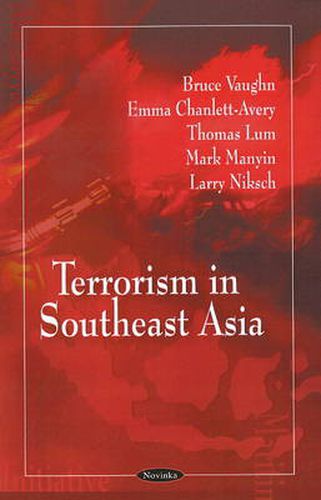Terrorism in Southeast Asia
Bruce Vaughn,Emma Chanlett-Avery,Thomas Lum

Terrorism in Southeast Asia
Bruce Vaughn,Emma Chanlett-Avery,Thomas Lum
Since September 2001, the United States has been concerned with radical Islamist groups in Southeast Asia, particularly those in the Philippines, Indonesia, Malaysia, Thailand, and Singapore that are known to have ties to the Al Qaeda terrorist network. Southeast Asia is a base for past, current, and possibly future Al Qaeda operations. For nearly fifteen years, Al Qaeda has penetrated the region by establishing local cells, training Southeast Asians in its camps in Afghanistan, and by financing and cooperating with indigenous radical Islamist groups. Indonesia and the southern Philippines have been particularly vulnerable to penetration by anti-American Islamic terrorist groups. Members of one indigenous network, Jemaah Islamiyah (JI), with extensive ties to Al Qaeda, are known to have helped two of the September 11 2001 hijackers and have confessed to plotting and carrying out attacks against Western targets. These include the deadliest terrorist attack since September 2001: the 12 October 2002 bombing in Bali, Indonesia, that killed approximately 200 people, mostly Westerners. On 9 September 2004, a suicide bombing attack thought to be the work of JI struck the Australian Embassy in Jakarta, killing 10 and wounding around 200. In October 2005, three suicide bombers exploded bombs within minutes of one another in Bali, killing more than 20 people. These attacks suggest that JI remains capable of carrying out relatively large-scale plots against Western targets, despite the arrest or death of hundreds of JI members, including most of its known leadership. To combat the threat, the Bush Administration has pressed countries in the region to arrest suspected terrorist individuals and organisations, deployed over 1,000 troops to the southern Philippines to advise the Philippine military in their fight against the violent Abu Sayyaf Group, launched a Regional Maritime Security Initiative to enhance security in the Straits of Malacca, increased intelligence sharing operations, restarted military-military relations with Indonesia (including restoring International Military Education and Training [IMET]), and provided or requested from Congress over $1 billion in aid to Indonesia and the Philippines. The responses of countries in the region to both the threat and to the U.S. reaction generally have varied with the intensity of their concerns about the threat to their own stability and domestic politics. In general, Singapore, Malaysia, and the Philippines were quick to crack down on militant groups and share intelligence with the United States and Australia, whereas Indonesia began to do so only after attacks or arrests revealed the severity of the threat to their citizens. That said, many governments view increased American pressure and military presence in their region with ambivalence because of the political sensitivity of the issue with both mainstream Islamic and secular nationalist groups. Indonesia and Malaysia are majority Muslim states while the Philippines and Thailand have sizeable, and historically alienated and separatist-minded, Muslim minorities.
This item is not currently in-stock. It can be ordered online and is expected to ship in approx 4 weeks
Our stock data is updated periodically, and availability may change throughout the day for in-demand items. Please call the relevant shop for the most current stock information. Prices are subject to change without notice.
Sign in or become a Readings Member to add this title to a wishlist.


